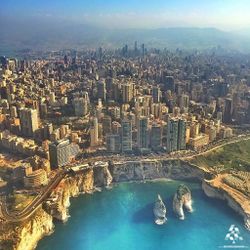Difference between revisions of "Hatslénki"
Jonnyboi 17 (talk | contribs) (Created page with "{{Infobox settlement | name = Hatslenki | native_name = Hatslénki | native_name_lang = <!-- ISO 639-2 code e.g. "fr" for French. If more...") |
|||
| (2 intermediate revisions by 2 users not shown) | |||
| Line 1: | Line 1: | ||
{{OOD}} | |||
{{Infobox settlement | {{Infobox settlement | ||
| name = Hatslenki | | name = Hatslenki | ||
| Line 100: | Line 101: | ||
}} | }} | ||
'''Hatslénki''' (pronunciation: /xatslɛŋki/ <!--add IPA in the native language, and any other minority languages in the city-->) is the largest city in Imoztar according to population size, as well as containing the largest port in the country. <!--add the settlement's location within its native country/island/continent; add a brief summary of anything important and interesting related to the settlement--> | '''Hatslénki''' (pronunciation: /xatslɛŋki/ <!--add IPA in the native language, and any other minority languages in the city-->) is the largest city in [[Imoztar]] according to population size, as well as containing the largest port in the country. <!--add the settlement's location within its native country/island/continent; add a brief summary of anything important and interesting related to the settlement--> | ||
==Etymology== | ==Etymology== | ||
The city’s name comes from Imojan “hats”, which means “rich”, and “lenki”, which means “coast”. The spelling is more phonetically spelt, with an “é” in the spelling rather than historical “e”. | The city’s name comes from Imojan “hats”, which means “rich”, and “lenki”, which means “coast”. The spelling is more phonetically spelt, with an “é” in the spelling rather than historical “e”. | ||
==History== | ==History== | ||
The city first started in the late 1800s as a small settlement on the ocean, originally called “ Immjoţing”, which means “Heaven’s gate”. It was called such because it was seen as an entryway into Imoztar throughout history, which is why one of the popular nicknames for the city now is “Heaven’s Gate”. This small settlement slowly grew from a fishing village into a “port of authority”, as many immigrants passed through the city‘s port in order to get into the country. Hatslénki’s “immigrant stations” (the ports in which immigrants entered and were processed into the country) were used for decades as a form of legal immigration into the country up until the 1960s, in which naturalization and legal immigration was done in other ways. The immigrant ports were destroyed and replaced with industrial space except for one, which is now a museum. | |||
==Geography== | ==Geography== | ||
| Line 126: | Line 128: | ||
[[Category: | [[Category:Archive]] | ||
Latest revision as of 22:40, 17 January 2023
 | This article or section is out of date. A country/countries relevant to this article have been removed from Sahar and have been retconned. Not everything here may still be considered canonical. This article was last edited by Arryog (talk | contribs) 14 months ago. (Update) |
Hatslenki
Hatslénki | |
|---|---|
 Hatslénki Skyline | |
| Etymology: “Rich Coast” |
Hatslénki (pronunciation: /xatslɛŋki/ ) is the largest city in Imoztar according to population size, as well as containing the largest port in the country.
Etymology
The city’s name comes from Imojan “hats”, which means “rich”, and “lenki”, which means “coast”. The spelling is more phonetically spelt, with an “é” in the spelling rather than historical “e”.
History
The city first started in the late 1800s as a small settlement on the ocean, originally called “ Immjoţing”, which means “Heaven’s gate”. It was called such because it was seen as an entryway into Imoztar throughout history, which is why one of the popular nicknames for the city now is “Heaven’s Gate”. This small settlement slowly grew from a fishing village into a “port of authority”, as many immigrants passed through the city‘s port in order to get into the country. Hatslénki’s “immigrant stations” (the ports in which immigrants entered and were processed into the country) were used for decades as a form of legal immigration into the country up until the 1960s, in which naturalization and legal immigration was done in other ways. The immigrant ports were destroyed and replaced with industrial space except for one, which is now a museum.